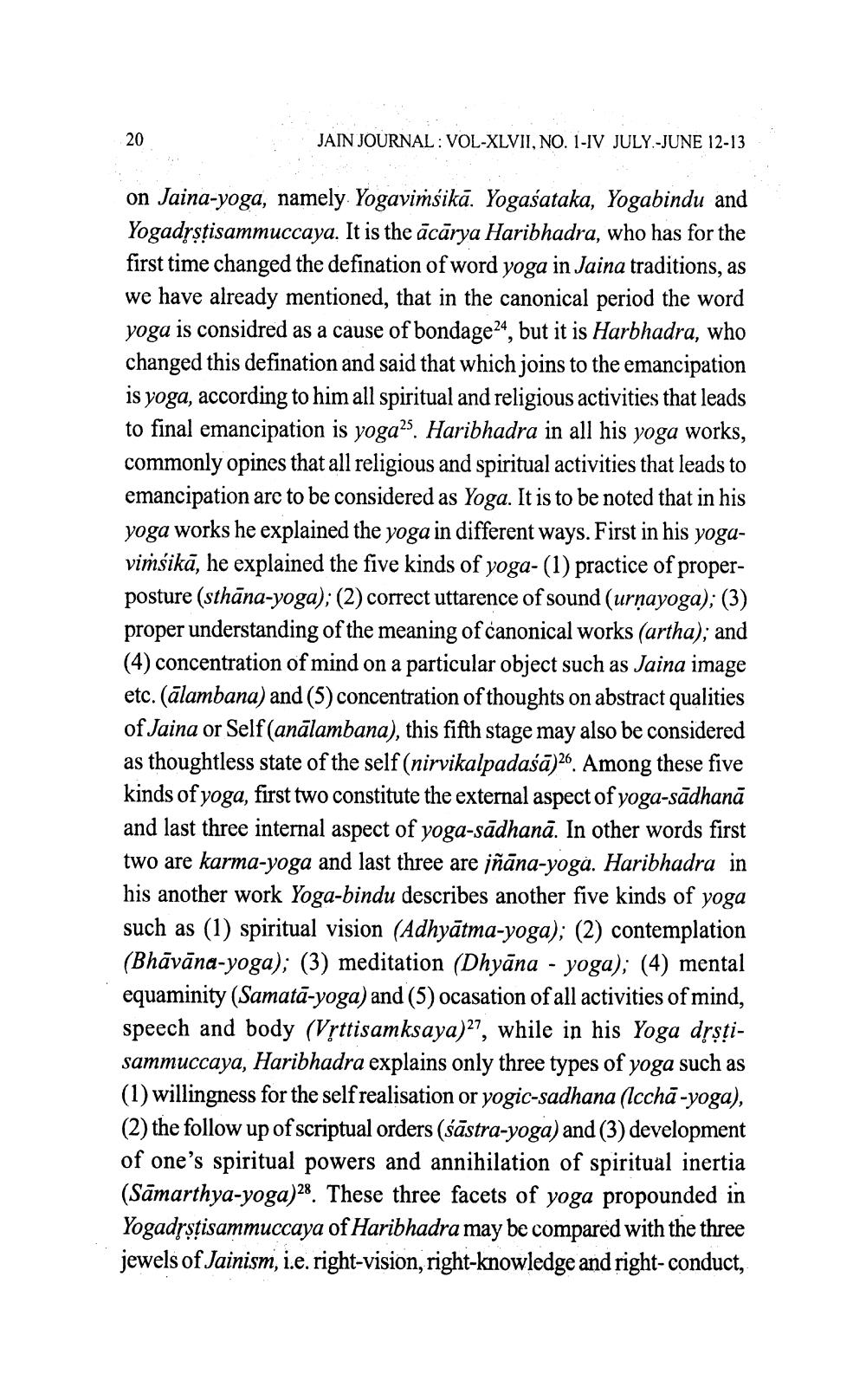________________
JAIN JOURNAL: VOL-XLVII, NO. 1-IV JULY.-JUNE 12-13
on Jaina-yoga, namely Yogavimsikā. Yogaśataka, Yogabindu and Yogadystisammuccaya. It is the ācārya Haribhadra, who has for the first time changed the defination of word yoga in Jaina traditions, as we have already mentioned, that in the canonical period the word yoga is considred as a cause of bondage24, but it is Harbhadra, who changed this defination and said that which joins to the emancipation is yoga, according to him all spiritual and religious activities that leads to final emancipation is yoga25. Haribhadra in all his yoga works, commonly opines that all religious and spiritual activities that leads to emancipation are to be considered as Yoga. It is to be noted that in his yoga works he explained the yoga in different ways. First in his yogaviņšikā, he explained the five kinds of yoga-(1) practice of properposture (sthāna-yoga); (2) correct uttarence of sound (urņayoga); (3) proper understanding of the meaning of canonical works (artha); and (4) concentration of mind on a particular object such as Jaina image etc. (ālambana) and (5) concentration of thoughts on abstract qualities of Jaina or Self (anālambana), this fifth stage may also be considered as thoughtless state of the self (nirvikalpadašā)26. Among these five kinds of yoga, first two constitute the external aspect of yoga-sādhanā and last three internal aspect of yoga-sādhanā. In other words first two are karma-yoga and last three are jñāna-yoga. Haribhadra in his another work Yoga-bindu describes another five kinds of yoga such as (1) spiritual vision (Adhyātma-yoga); (2) contemplation (Bhāvāna-yoga); (3) meditation (Dhyāna - yoga); (4) mental equaminity (Samatā-yoga) and (5) ocasation of all activities of mind, speech and body (Vrttisamksaya)27, while in his Yoga drstisammuccaya, Haribhadra explains only three types of yoga such as (1) willingness for the self realisation or yogic-sadhana (Icchā-yoga), (2) the follow up of scriptual orders (śāstra-yoga) and (3) development of one's spiritual powers and annihilation of spiritual inertia (Sāmarthya-yoga)28. These three facets of yoga propounded in Yogadystisammuccaya of Haribhadra may be compared with the three jewels of Jainism, i.e. right-vision, right-knowledge and right-conduct,




